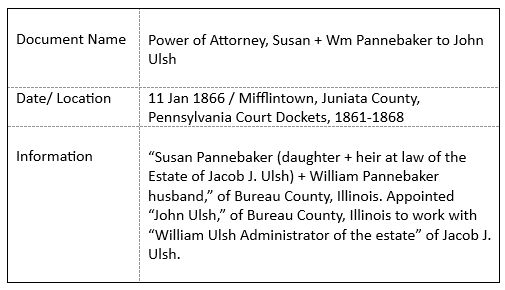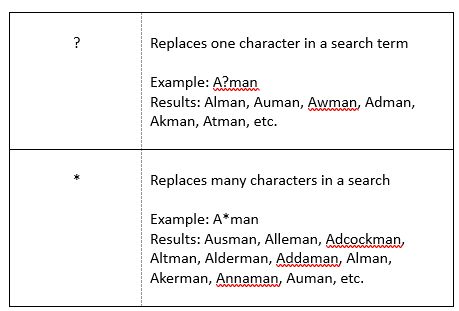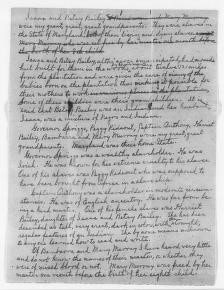Research Game Changer: FamilySearch’s Full Text Search, Part 2
 26
26Sep
 Previously we discussed the ways that FamilySearch’s new beta edition of Full-Text Search can be a research game changer. This article will describe strategies for using the new tool.
Previously we discussed the ways that FamilySearch’s new beta edition of Full-Text Search can be a research game changer. This article will describe strategies for using the new tool.
Because Full Text Search is still in beta, users will need to enable the tool. Do so by logging in to FamilySearch and navigating to FamilySearch.org/labs. Click on “Try It” in the box titled “Expand your search with Full Text” to enable, then “Go To Experiment.”
Using + and “ ” (quotes): Example Finding the Birth Family
The tool has two areas to enter search terms labeled “Keywords” and “Ancestor Information.” It also accepts common search limiters and parameters to help you define your search. In a search it is often helpful to use quotes around a name or phrase. This ensures that the whole phrase will be in the results. Common uses of the phrases used in quotes are “Last will and testament” and “heir of.” Quotes are also useful around the full name, such as “William Jones.”
Without a full name in quotes, results will include each individual name. The search is smart enough that an ancestor’s name in quotes will still insert a middle name or initial in the results. So “William Jones” will report “William Jones,” “William F. Jones,” and “William R. Jones.”
Using the + sign before a search term will require the results to include that in the results. Without the + sign, some of the results may not include all of the terms in the search.
Example search:
Susan Pannebaker, wife of William, is found living in Bureau County, Illinois, in the 1860, 1870, and 1880 censuses and they indicate that she was born in Pennsylvania. She likely married William in Pennsylvania, which did not record marriages until 1885. A family rumor held that her maiden name was Ulsh, but Ulsh turns out to be a pretty common name in central Pennsylvania, and it was not known which county she came from. To help find her father, a full-text search for a possible inheritance from a parent or grandparent in Pennsylvania is best.
Keywords: “Illinois” “Susan Ulsh” Results: 4,064,551
Keywords: “Illinois” “Susan Pannebaker” Results: 4,064,553
Filter to Pennsylvania: 22,040 results
Over 22,000 results is still far too many to be helpful but it turns out that some of the results only contain “Illinois” and some only contain “Susan Pannebaker” and not both of them together. The next search modification solved the problem. Illinois is included in the terms because we are looking for documents outside of Illinois (Pennsylvania) that may include that location.
Keywords: +Illinois +“Susan Pannebaker” +”Ulsh”
This formula, with the + sign, tells the search engine to show only results that include all three phrases, not just one or two of them.
Results: 1 document, in Juniata County, Pennsylvania.
Full-text search uncovered the exact document needed to find Susan’s birth family, even without having to filter results.

Right at the top, the document states that Susan Pannebaker of Bureau County is the daughter of Jacob J. Ulsh, and that William Pannebaker is her husband. It also states that William Ulsh is the administrator of Jacob J. Ulsh’s estate. Susan and her brother John have migrated to Illinois. Susan has agreed to let John work with William Ulsh in Pennsylvania to settle her share of the inheritance. Although the Power of Attorney was struck in Illinois, the document is filed in Juniata County court records because that is where the estate is being probated (processed) by the county court.
This one document, quickly found with full text search and careful use of the + and “ ” in the search terms, has identified Susan’s father and brother, and where her birth family lived. This made it possible to trace her Ulsh ancestry.
Another full-text search for “Jacob J. Ulsh” – in quotes so that the results are only all elements of the name together – uncovered another set of court documents that identifies Jacob’s widow as Hannah Ulsh. The documents also name his children as Simon, William, Jacob, John, Susan Pannebaker, James W.C., and Mary E Ulsh. This search tool helped recreate Susan Ulsh Pannebaker’s birth family in a few minutes.
Users of the full-text search tool will want to experiment with the right combination of search terms, + and “ ” to use to get useful results.
Wildcards for uncertain spellings
The last article (Research Game Changer) highlighted the problem of finding Peter Auman’s wife without a first name or birth surname. As noted, one of the difficulties was the many spellings of the surname Auman. He was eventually found using the “?” wildcard. The most common wildcards to use are:

FamilySearch’s full-text search does not allow the use of wildcards with the quotes around the term. As can be seen from the example above, it is important to be careful about using the * wildcard as the results are often much broader than intended.
Narrowing the Search Results
After entering the search terms the main screen will display unfiltered results. Depending upon the search, there may be hundreds, thousands, or even millions of results. Fortunately, it is possible to filter them based on Collection, Year, Place, and Record Type. Experience has shown that it is most useful to filter on Place first.
For example, searching for “Abraham Nelson,” who migrated to Tennessee in the late 1700s from North Carolina (possibly from Orange County), yields an overwhelming number of results to read through. Filtering makes the results manageable.
Keywords: “Abraham Nelson” (with quotes, without returns over 4 million) Results: 1,919
Filter > Place = United States of America > North Carolina Results: 194
It is relatively straightforward from there to narrow further to Orange County.
Filter>Place = United States of America > North Carolina > Orange Results: 52
The reason to use filters rather than an original search keyword “Orange County,” is that the filter can be quickly broadened to include neighboring counties without a new search. Further, not all documents of interest would have the words “Orange County” in them.
If the filtering had begun with Collection first rather than Place, the filter would have offered 42 choices, including collections in Canada and Australia, wasting time to pick through to find the right ones. Further, this search wanted to look at multiple types of collections, including land, wills, and even enslavement documents for specific places.
Filter Tips:
- It is nearly always more efficient to filter by Place first, then by date or collection.
- In narrowing places, be sure to include neighboring counties, states, or provinces where the research target may have also operated.
Saving, Attaching, and Citing the Documents 
A very useful feature of the full-text search is the ability to save to computer. Users can download the document image, or the image along with the typed full-text transcript, or just the transcript. It is best practice to download both the image and the transcript; although the transcript is easier to read, it can—and often does—misinterpret some of the handwriting. It is best to keep the actual image to check the results.
Attaching the document to someone in the FamilySearch FamilyTree is a good practice to make it easier for others to find. Simply click on Attach to Tree at the top of the image screen. The familiar FamilySearch dialog will open to select the person or persons in the tree.
In genealogy, it is always important to note the full citation of a source, so that others can have confidence in the research and to be able to find the document again. To do this, click on Attach to Tree and in the right-hand column scroll down to click on Metadata. The name of the author, the collection name, the volume, and IGN (Image Group Number) is displayed. Clicking More on the citation information will enable the user to copy the full FamilySearch-style citation.
Four More Tips for Using the Full-Text Search
- It is quite useful to scroll to the bottom of the search results and choose to view 100 on a page, rather than the default 20 results per page. It is far faster to scroll through the results than having to page multiple times.
- The closest fit matches are first, less relevant come later. This is especially true if the “ ” and + signs are not used to define the search.
- Review a document result that may have an odd spelling but seems to be in the right place at the right time. The technology for machine transcription of handwritten documents is not perfected and examining the actual image may uncover important clues.
- When crafting search terms, remember common name abbreviations and nicknames. Examples are Wm = William, Jas = James, Thos = Thomas, and nicknames Polly = Mary, Sally = Sarah.
It does take some experimentation, but this beta full text tool from FamilySearch has great promise to speed family history research.
We have experts at Price Genealogy who excel at finding elusive ancestors. Reach out to us today to help you with your family history!
Karen
Sources:
"Mifflintown, Juniata, Pennsylvania, United States records," images, FamilySearch (https://www.familysearch.org/ark:/61903/3:1:3Q9M-CSNP-S3W3-2?view=fullText : Aug 17, 2024), image 212 of 281; “Power of Attorney Susan + Wm Pannebaker to John Ulsh,” 11 Jan 1866.
"Mifflintown, Juniata, Pennsylvania, United States records," images, FamilySearch (https://www.familysearch.org/ark:/61903/3:1:3Q9M-CSNP-S37P-9?view=fullText : Aug 17, 2024), image 213 of 281; “Release Simon Ulsh et. al. to William Ulsh,” February 1866.
Image: Library of Congress “Free to Use Genealogy Collection,” Frederick Douglass Papers, loc.gov (http://hdl.loc.gov/loc.mss/ms000009.mss11879.00992); citing Series: Addition I, 1851-1964, mss11879, box 51, reel 34.
